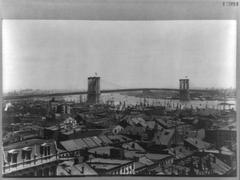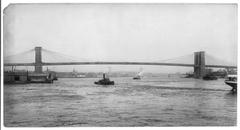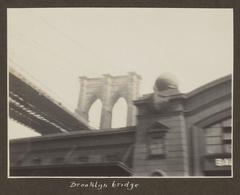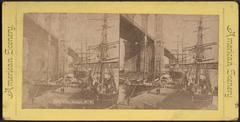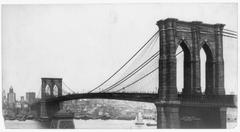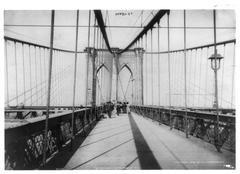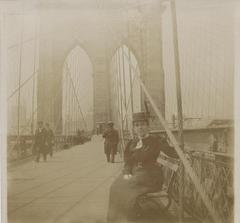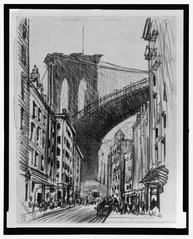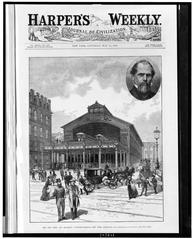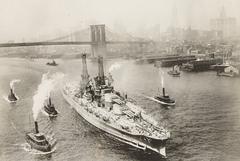
Brooklyn Bridge Visiting Hours, Tickets, and Historical Sites Guide
Date: 14/06/2025
Introduction
The Brooklyn Bridge is one of New York City’s most celebrated landmarks, admired for its pioneering engineering, striking neo-Gothic architecture, and panoramic views. Spanning the East River and linking Manhattan with Brooklyn, this iconic structure stands as a symbol of the city’s innovation, resilience, and dynamic spirit. Whether you are captivated by its history, seeking stunning photo opportunities, or planning a memorable urban walk, this comprehensive guide provides essential information on visiting hours, accessibility, ticketing, travel tips, and nearby attractions.
Contents
- Introduction and Historical Overview
- Brooklyn Bridge Visiting Information
- Hours
- Tickets and Access
- Entrances and Travel Tips
- Accessibility
- Guided Tours and Photo Spots
- Nearby Attractions
- Engineering and Architectural Highlights
- Frequently Asked Questions (FAQ)
- Conclusion and Practical Summary
- Sources
Historical Overview
Early Proposals and the Need for a Bridge
In the 19th century, the East River was a major obstacle between Manhattan and Brooklyn, then two separate cities. Ferries were the main form of passage, yet were unreliable, especially in winter when the river froze, disrupting daily life and commerce. Calls for a permanent crossing began in the early 1800s, but substantial action only materialized in the 1860s, setting the stage for one of America’s greatest engineering feats (World of History; Wikipedia).
Vision and Design: The Roebling Legacy
John A. Roebling, a German-born civil engineer renowned for suspension bridges, envisioned a steel-wire bridge to connect Manhattan and Brooklyn. After the New York State Legislature approved the project in 1867, funding came from a mix of public bonds and private investment, with political figures like William Tweed helping secure support (New York Dearest).
Construction: Triumphs and Sacrifice
Construction began in 1869 but was marred by tragedy. John Roebling died from an accident before construction started, leaving his son, Washington Roebling, in charge. Washington was later incapacitated by decompression sickness from working in pressurized caissons. His wife, Emily Warren Roebling, played a crucial role in managing the project, relaying instructions and overseeing day-to-day operations (History.com; History Hit).
The bridge’s construction was perilous and innovative, relying on pneumatic caissons and introducing steel-wire cables for the first time in suspension bridge history. The work was hazardous, with at least 27 fatalities recorded over the 14-year building period (Wikipedia).
Grand Opening and Impact
Completed in 1883, the Brooklyn Bridge was the longest suspension bridge in the world, with a main span of 1,595.5 feet (486.3 meters). Its twin towers, built from granite, limestone, and Rosendale cement, became the tallest structures in the Western Hemisphere at the time (History Hit). The opening ceremony was attended by thousands, including President Chester A. Arthur and Emily Roebling, who was the first to cross (World of History). The bridge quickly earned the nickname “eighth wonder of the world.”
The bridge unified Manhattan and Brooklyn, accelerating economic growth and facilitating the consolidation of New York’s boroughs into a single city in 1898 (History.com). The project’s cost, equivalent to over $500 million today, was finally paid off in 1956 (Wikipedia).
Preservation and Modern Use
Over time, the bridge has adapted to the city’s needs. Originally designed for horse-drawn carriages and trains, it now serves vehicles, pedestrians, and cyclists, with major renovations in the 20th and 21st centuries ensuring its safety. In 1964, it was designated a National Historic Landmark (World of History; History.com). Its silhouette remains a symbol of New York’s enduring spirit.
Brooklyn Bridge Visiting Information
Visiting Hours
The pedestrian and bicycle walkway on the Brooklyn Bridge is open 24 hours a day, 7 days a week, year-round. There are no restricted hours or seasonal closures. For the best experience and safety, plan your visit during daylight or early evening.
Tickets and Access
There is no cost or ticket required to walk or bike across the Brooklyn Bridge. Access is completely free for pedestrians and cyclists (NYC Official Guide).
Entrances and Getting There
- Manhattan Entrance: Near City Hall Park at Centre Street and Park Row. Subway access: 4, 5, 6, J, Z (Brooklyn Bridge–City Hall), R, W (City Hall).
- Brooklyn Entrance: Tillary Street & Adams Street (wheelchair accessible); Washington Street & Prospect Street (stairs, not accessible). Subway access: A, C, F (High Street–Brooklyn Bridge), 2, 3 (Clark Street) (MTA Official Site).
- Travel Tip: Early morning (before 8 a.m.) and sunset are the best times for fewer crowds and beautiful light.
Accessibility
The main entrances at both ends are wheelchair and stroller accessible. The bridge has an elevated, wide promenade for pedestrians and cyclists. Note that shortcut stairway entrances are not accessible for wheelchairs or strollers.
- The walk is 1.1 miles (1.8 km) long.
- There are no restrooms or food vendors on the bridge itself; plan ahead.
Guided Tours and Photo Spots
Various companies offer guided walking and biking tours, providing expert commentary on engineering, history, and culture. Self-guided audio tours are also available. Top photo locations include:
- The mid-span section for cable and skyline views.
- Brooklyn Bridge Park for bridge-and-skyline photos.
- The pedestrian walkway near the Manhattan tower.
Nearby Attractions
- Brooklyn Bridge Park: Waterfront lawns, playgrounds, and city views.
- DUMBO: Art galleries, trendy shops, and eateries.
- Manhattan Financial District: City Hall Park, Woolworth Building, One World Trade Center, and the 9/11 Memorial.
Engineering and Architectural Highlights
- Hybrid Suspension and Cable-Stayed System: The first in the world to use steel-wire cables for strength and flexibility (History101; EAA Architecture).
- Neo-Gothic Stone Towers: 276 feet (84 meters) tall, featuring pointed arches and buttresses (ASCE Civil Engineering Magazine).
- Pneumatic Caissons: Allowed foundations to be built deep into the riverbed—an innovative and dangerous process (History Tools).
- Steel-Wire Cables: Each main cable contains 5,434 steel wires, supporting the deck for vehicles, bikes, and pedestrians (Loving New York).
- Elevated Pedestrian Walkway: Offers some of the best city views, with dedicated lanes for safety (Your Brooklyn Guide).
Frequently Asked Questions (FAQ)
Q: What are the Brooklyn Bridge visiting hours?
A: The bridge is open 24/7 for pedestrians and cyclists.
Q: Do I need a ticket to walk or bike across the bridge?
A: No, it’s free of charge.
Q: Is the bridge accessible for wheelchairs and strollers?
A: Yes, via the main entrances at both ends.
Q: Where are the entrances located?
A: Manhattan: near City Hall Park. Brooklyn: Tillary & Adams Street or Washington & Prospect Street (stairs only).
Q: Are guided tours available?
A: Yes, multiple companies offer walking and biking tours, plus self-guided audio tours.
Q: Are there restrooms or food vendors on the bridge?
A: No. Plan restroom breaks and refreshments before or after your walk.
Q: What are the best times to visit?
A: Early morning or sunset for fewer crowds and optimal lighting.
Practical Summary and Tips
- No tickets required: Brooklyn Bridge access is always free.
- Open 24/7: Visit any time, but daylight and sunset are best.
- Accessibility: Main entrances are wheelchair and stroller friendly.
- Duration: Allow 1–2 hours for a leisurely walk and photos.
- Prepare for weather: Bring water, sunscreen, and dress appropriately.
- No amenities on the bridge: Plan for food, drinks, and restrooms before or after your visit.
- Explore both sides: Don’t miss DUMBO and Brooklyn Bridge Park in Brooklyn, and City Hall Park in Manhattan.
For an enriched experience, consider guided tours or use GPS-enabled audio tours. Download the Audiala app for up-to-date visitor info, curated walks, and exclusive content, and follow us on social media for the latest updates on New York City’s top attractions.
Sources
- World of History cheatsheet
- History.com: Brooklyn Bridge
- Wikipedia: Brooklyn Bridge
- New York Dearest: Interesting Facts About Brooklyn Bridge NYC
- History Hit: Brooklyn Bridge
- EAA Architecture: The Architecture Behind Brooklyn Bridge
- ASCE Civil Engineering Magazine
- History Tools: The Brooklyn Bridge
- NYC Official Guide: Brooklyn Bridge
- NYC DOT: Brooklyn Bridge Infrastructure
- MTA Official Site

